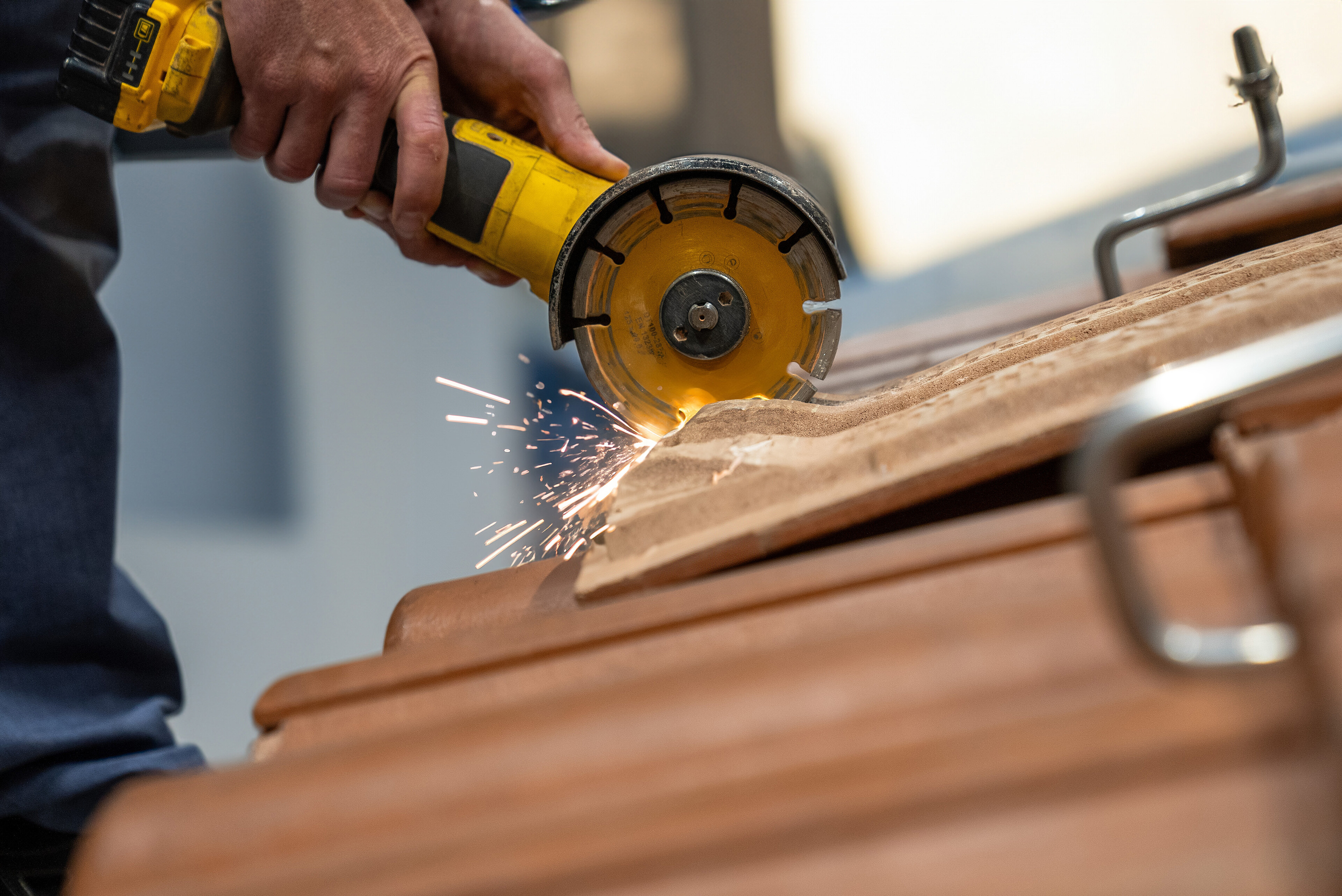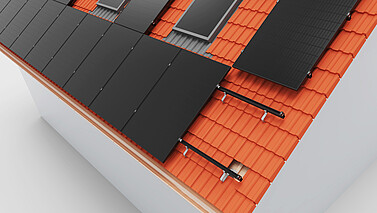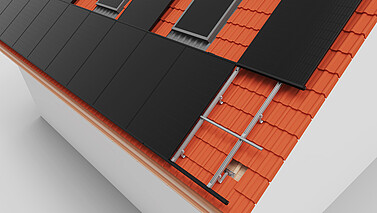The importance of the standard roof pitch
In the new "Technical rule for roof coverings with roof tiles and roof stones", the additional measures have been simplified and restructured depending on the standard roof pitch. Recommendations for the attachment of solar systems have been added.
The standard roof pitch is of central importance. This is the minimum pitch of the roof for rain safety. The value can be found in the tile manufacturer's data sheet and can vary greatly - for roof tiles from approx. 16° to approx. 35° pitch. It is therefore worth taking a look at the data sheet or the processing instructions.
Additional measures for rain protection are only necessary if the pitch falls below the standard roof pitch.
Roof hooks can be used from standard roof pitches
As long as the standard roof pitch is not undercut, roof hooks can be used without hesitation, as was previously the case. This type of fastening corresponds to the state of the art.
Special measures when falling below the standard roof pitch
If the standard roof pitch is undercut, the technical rules recommend roof support tiles that fit seamlessly into the existing roof covering without the need for manual adjustment. The product used should have the same properties as the original roof tiles in terms of height and side overlap, as well as water drainage.
This means that the usability of the replacement solutions currently available on the market must be checked carefully in each individual case. The use of so-called sheet metal replacement tiles could be incompatible with the technical rule in many cases - namely if they do not allow a form-fit connection.
So far, it can be summarized that it depends on the standard roof pitch - if this is reached or exceeded, roof hooks can be used without hesitation as before. It must be ensured that the distance between the lower tile and the bracket of the roof hook is 6 mm, as can be seen in our installation instructions.
Loss of warranty due to flexing?
In addition to the choice of fastener, the processing of tiles (the "flexing") during installation is also repeatedly discussed. This has to do with the guarantee provisions of the roof tile manufacturers. It is often claimed in the industry that the end customer "loses the guarantee for their roof". As a solution, some roof tile manufacturers recommend so-called "solar supports".
The difference between warranty and guarantee
It is important to distinguish between warranty and guarantee: Warranty is a statutory right, guarantee is a voluntary promise of performance by the manufacturer.
There are major differences between the two: While the warranty claim covers the work of the craftsman as a whole, the guarantee applies to each roof tile individually. Processing may invalidate the guarantee of individual tiles - but only the guarantee of precisely these processed tiles. The processing of tiles is completely normal in roof construction and is also carried out on roof windows, dormers and roof superstructures on almost every roof. So almost every roof also contains such "non-guaranteed tiles".
In a chain, the warranty is initially directed at the craftsman, who can assert his claim against the seller - who in turn asserts this claim against the manufacturer.
Processing the roof tile may invalidate the warranty claim against the roof tile manufacturer - but not the claim against the end customer's direct contact, the solar installer. This is because the craftsman creates his work by processing the tile and installing the roof hooks. And he also assumes the warranty for this - it has never been any different.
Technical aspects
There is also no cause for concern from a technical point of view: although the stability of the tile may be slightly reduced by the processing, this has no effect, as loads are transferred via the load-bearing novotegra roof hooks and not via the roof tiles. As long as the roof hooks are installed with a sufficient distance between the bracket and the roof tile, as described in our installation instructions, there is no cause for concern. This type of fastening has been state of the art for 20 years.
Legal perspective
Even from a legal point of view, the use of so-called solar beams does not increase safety. This is because no load calculation can be carried out for these elements. In the event of damage to the solar installation, for example due to a strong wind event or high snow pressure, the building owner would therefore not have a tested overall system statics of the mounting system manufacturer and would possibly have difficulties in claiming damages.
Furthermore, there is no contradiction with the guidelines for the roofing trade. These merely require that the area of application and the load-bearing capacity of load-bearing roof installation components must be specified and complied with by the manufacturer. This is exactly what our system planning with our "Solar Planit" does.
As a result
- The use of roof hooks has been state of the art for 20 years
- If used correctly, no consequential damage is known
- Is it almost impossible to create an overall system statics when using solar supports
- If no overall system statics can be presented, systems installed with solar mounting rails do not meet the requirements of the state of the art.
- Is the installation effort for solar panels much higher and less economical?
- If there is no contradiction to the guidelines for the roofing trade
Conclusion
Based on the above, installers can use the novotegra mounting system for tiled roofs without hesitation if the standard roof pitch is present. Additional measures are required for lower roof pitches. However, this is also the case if a solar system has not even been installed on the roof. Solar roof supports can improve the tightness of the roof if the pitch is below the standard roof pitch, but they also entail other risks. Their use must therefore be thoroughly checked.




